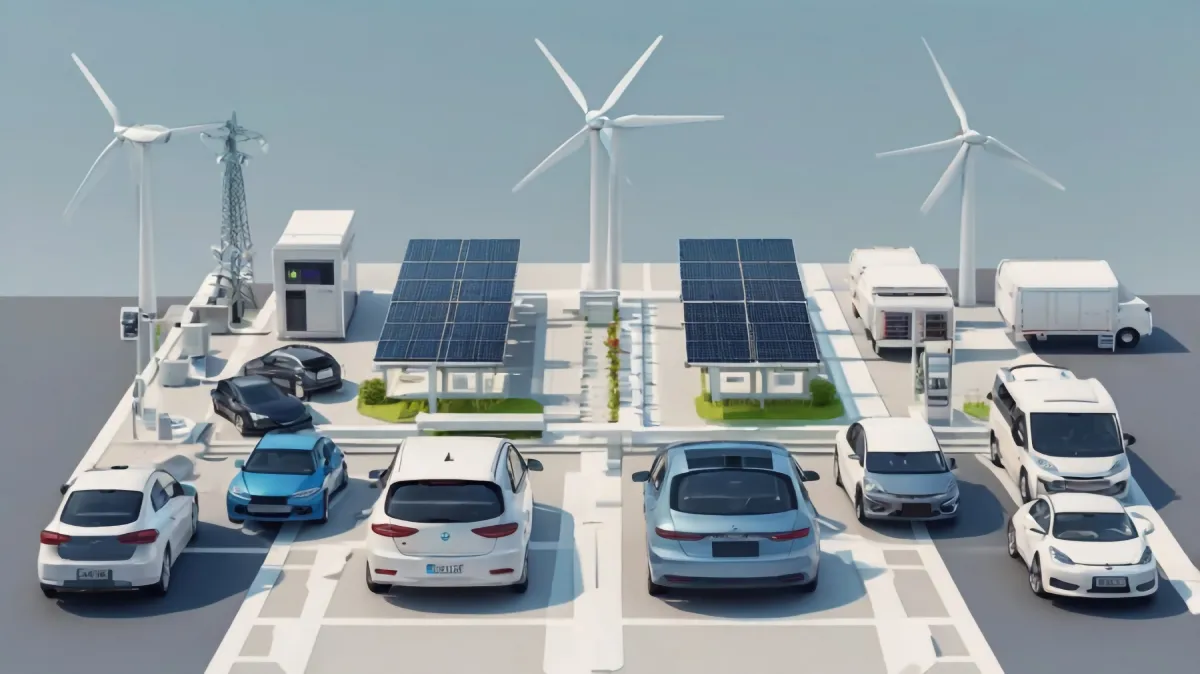
Driving Change: Renewable Energy Integration in Transportation
Renewable energy isn’t just about powering our homes and businesses anymore – it’s transforming how we move. Renewable energy integration in transportation is gaining momentum, offering a cleaner, greener way to fuel our vehicles and reduce our carbon footprint.
Why Transportation Needs a Renewable Makeover
The transportation sector is a major culprit when it comes to greenhouse gas emissions. According to the International Energy Agency (IEA), transportation accounts for nearly a third of global energy use and a quarter of global energy-related CO2 emissions. These emissions come primarily from the burning of fossil fuels like gasoline and diesel in cars, trucks, buses, ships, and airplanes. These pollutants contribute to climate change, harming our planet’s delicate ecosystems and weather patterns. They also cause air pollution, leading to respiratory problems and other health issues, particularly in densely populated areas.
Powering Up with Renewable Energy
There are several ways to integrate renewable energy into the transportation sector:
- Electric Vehicles (EVs): EVs are perhaps the most visible example of renewable energy integration in transportation. These vehicles run on electricity, which can be generated from renewable sources like solar, wind, and hydropower. EVs produce zero tailpipe emissions, making them a significant contributor to cleaner air and reduced greenhouse gas emissions. Additionally, EVs are becoming increasingly affordable and offer a smooth, quiet driving experience. Charging infrastructure is expanding rapidly, making it easier than ever to switch to an EV.
- Biofuels: Biofuels are derived from organic matter, such as plants or algae. They can be used in existing vehicles without major modifications, providing a renewable alternative to gasoline and diesel. Biofuels are particularly well-suited for powering heavy-duty vehicles like trucks and buses. However, the sustainability of biofuels depends on the feedstock used and production methods. Ideally, biofuels should be produced from non-food crops grown on land that is not suitable for agriculture.
- Hydrogen Fuel Cells: Hydrogen fuel cells convert hydrogen gas into electricity, producing only water vapor as a byproduct. This technology holds promise for long-distance transportation and heavy-duty vehicles. Hydrogen fueling stations are still relatively scarce, but investment in this infrastructure is growing. However, producing clean hydrogen requires renewable energy sources to avoid emissions associated with its production.
- Renewable Energy Charging Stations: Renewable energy sources, such as solar panels or wind turbines, can be used to power charging stations for EVs. This creates a truly closed-loop system, where the energy used to power the vehicle comes from a clean and sustainable source. Renewable energy charging stations can be installed at homes, workplaces, and public locations, making it convenient for EV owners to charge their vehicles.
- Solar-Powered Trains: Some trains are incorporating solar panels on their roofs to supplement their power needs, reducing reliance on the grid. While not fully solar-powered, this integration shows potential for further renewable energy use in rail transport.
- Electric Aviation: While still in early stages, electric airplanes are being developed for short-haul flights. This technology could significantly reduce aviation’s carbon footprint in the future.
- Renewable Energy in Public Transportation: Cities are electrifying their bus fleets and introducing electric trams and light rail systems. This not only reduces emissions but also improves air quality and noise levels in urban areas.
By diversifying renewable energy applications in transportation, with support from innovative hubs like transportation engineering services in Austin, Texas, we can accelerate the transition to a sustainable future, reduce our carbon footprint, and create a cleaner, healthier planet for all.
The Road to a Sustainable Future
The benefits of renewable energy integration in transportation are significant and far-reaching:
- Reduced Emissions: Renewable energy sources produce little to no greenhouse gas emissions, helping to mitigate climate change and improve air quality. This can lead to a healthier planet and improved public health, especially in areas with high levels of air pollution.
- Energy Security: Relying on renewable energy sources reduces our dependence on fossil fuels, which are a finite resource. This can lessen the geopolitical instability associated with oil and gas production and supply. Additionally, renewable energy sources are widely available and can be harnessed domestically, reducing our reliance on foreign energy imports.
- Economic Growth: The renewable energy sector is a major driver of innovation and job creation. As the demand for renewable energy technologies and infrastructure grows, new businesses and industries will emerge, creating a more diverse and sustainable economy. Investing in renewable energy can create new employment opportunities in areas like manufacturing, installation, and maintenance of renewable energy systems.
- Improved Public Health: Transitioning away from fossil fuels in transportation can lead to significant improvements in public health. Air pollution from transportation emissions is a major contributor to respiratory problems, heart disease, and other health issues. By reducing emissions from vehicles, we can create cleaner air and improve the overall health of our communities.
Overcoming Challenges, Accelerating Adoption
While renewable energy transportation is a promising path forward, there are challenges to overcome. The initial cost of EVs and other renewable energy vehicles can be higher than their fossil fuel counterparts. However, prices are coming down, and government incentives can help offset these costs. Additionally, expanding charging infrastructure is crucial to support the widespread adoption of EVs.
Driving Towards a Greener Tomorrow
Renewable energy integration in transportation is not just a trend – it’s a necessity. By embracing renewable energy sources, we can create a transportation system that is cleaner, more sustainable, and less harmful to our planet. This shift will require collaboration between governments, businesses, and individuals, but the rewards are worth the effort. As we drive towards a greener tomorrow, renewable energy will be the fuel that powers our journey.





Leave a Reply